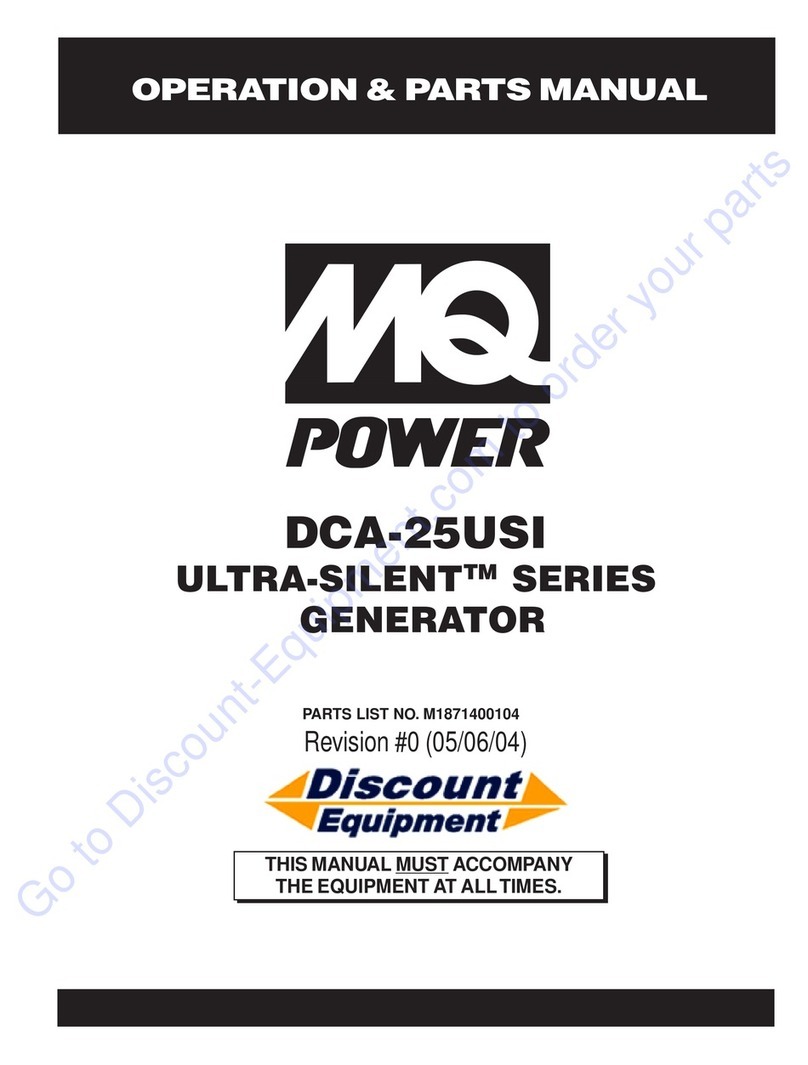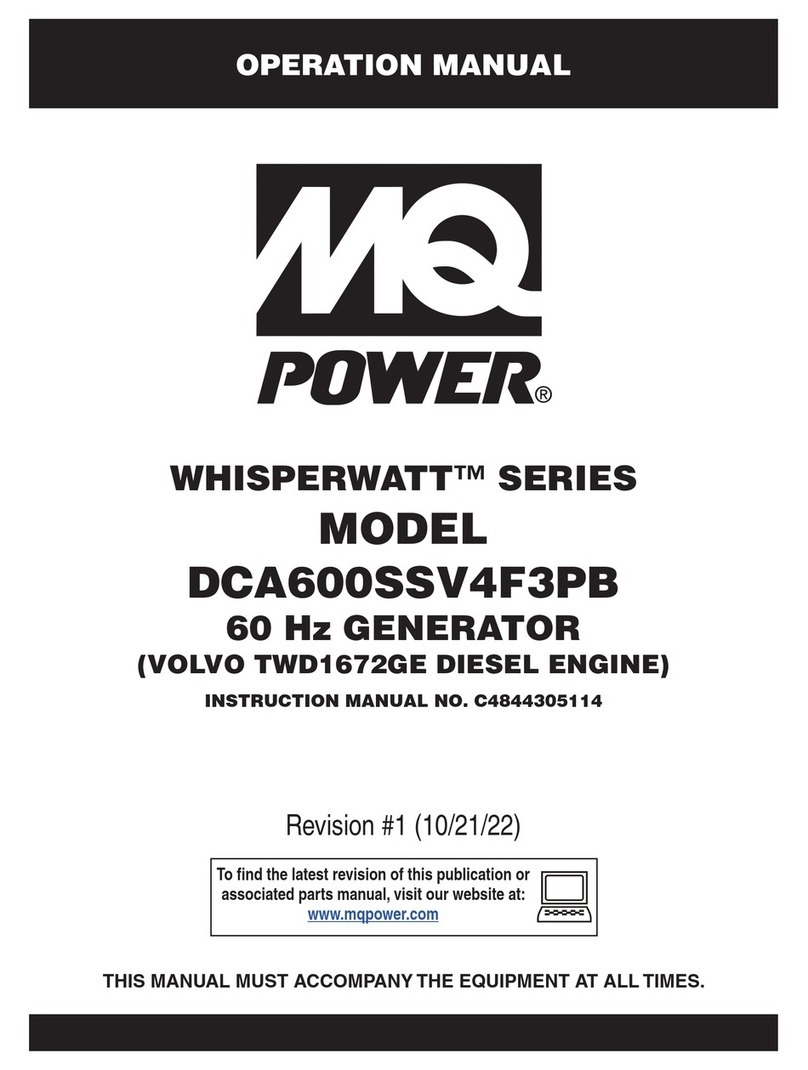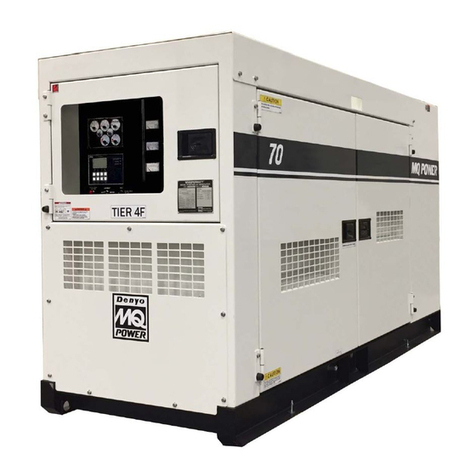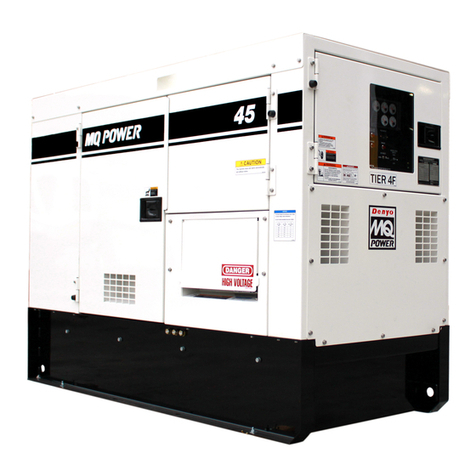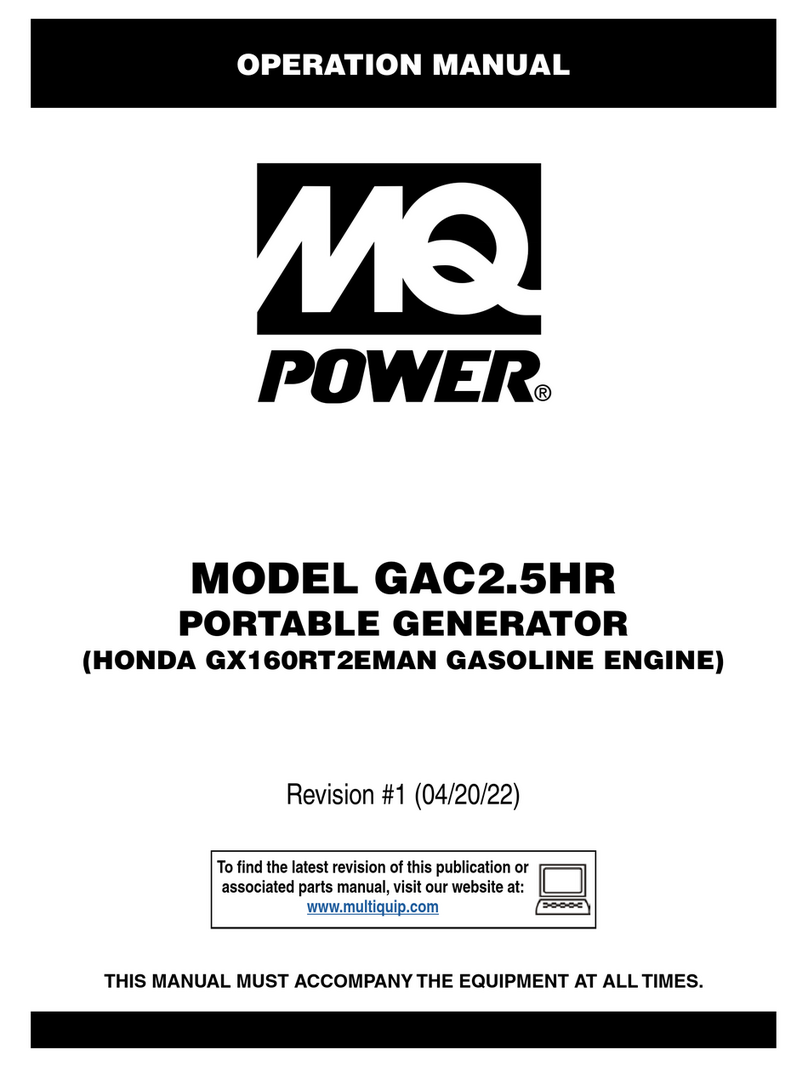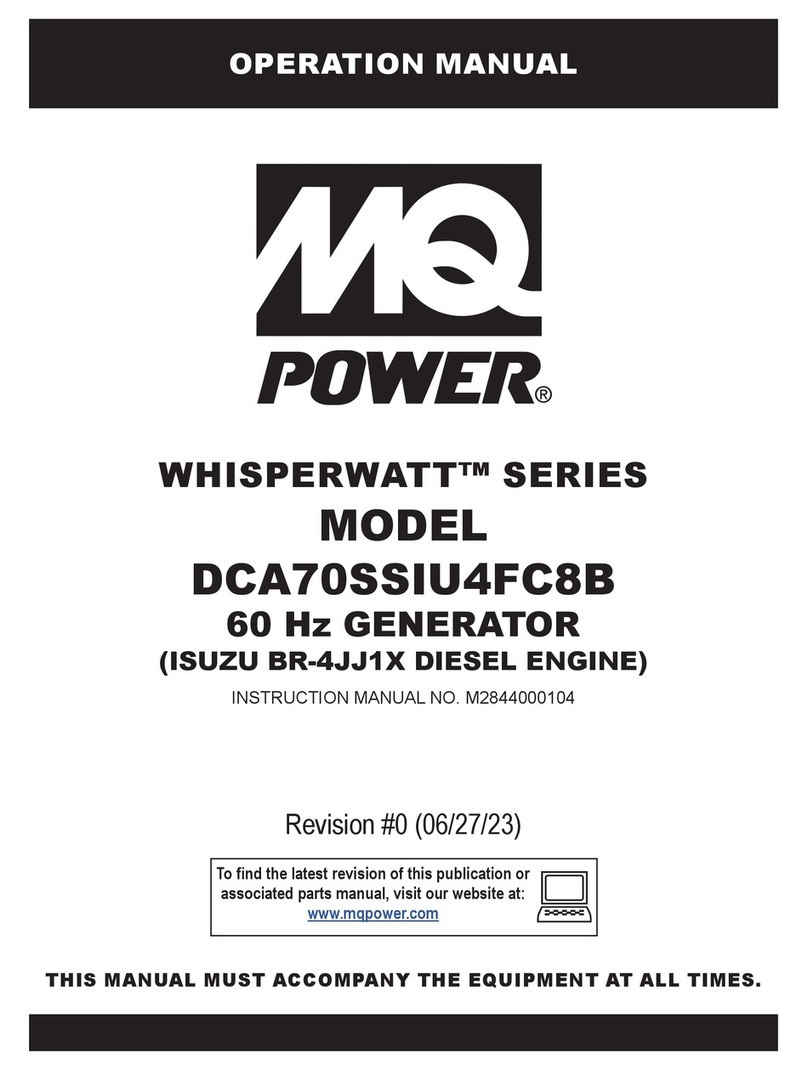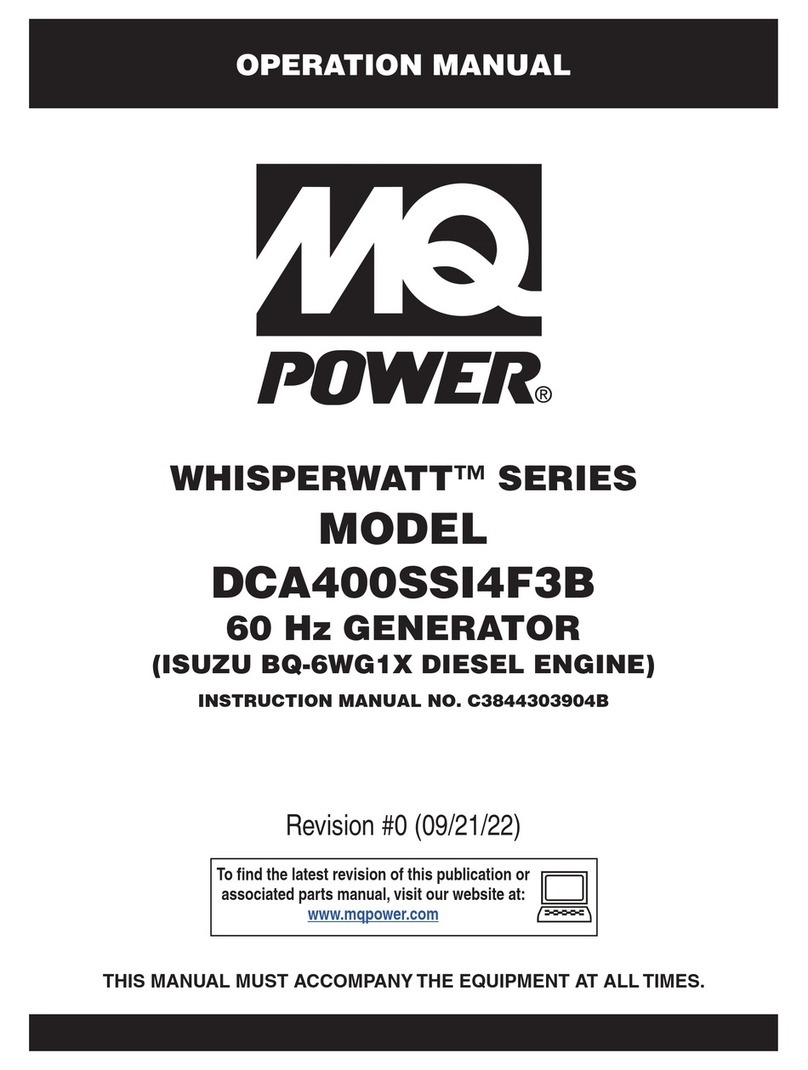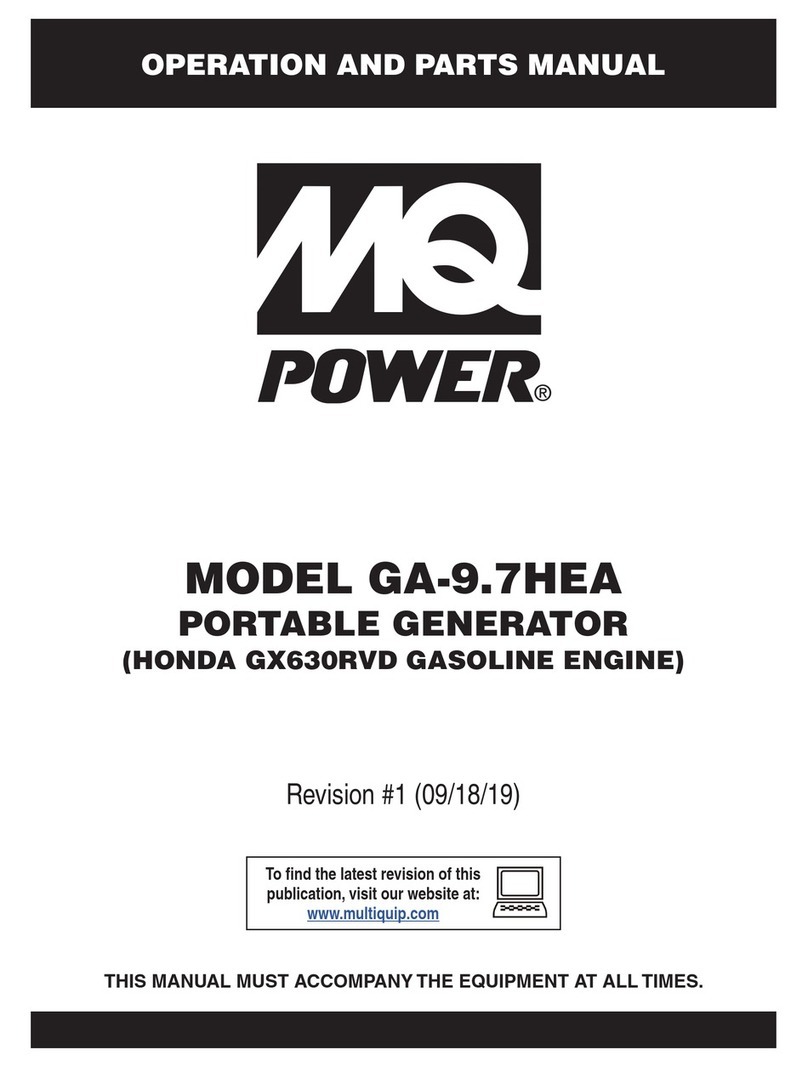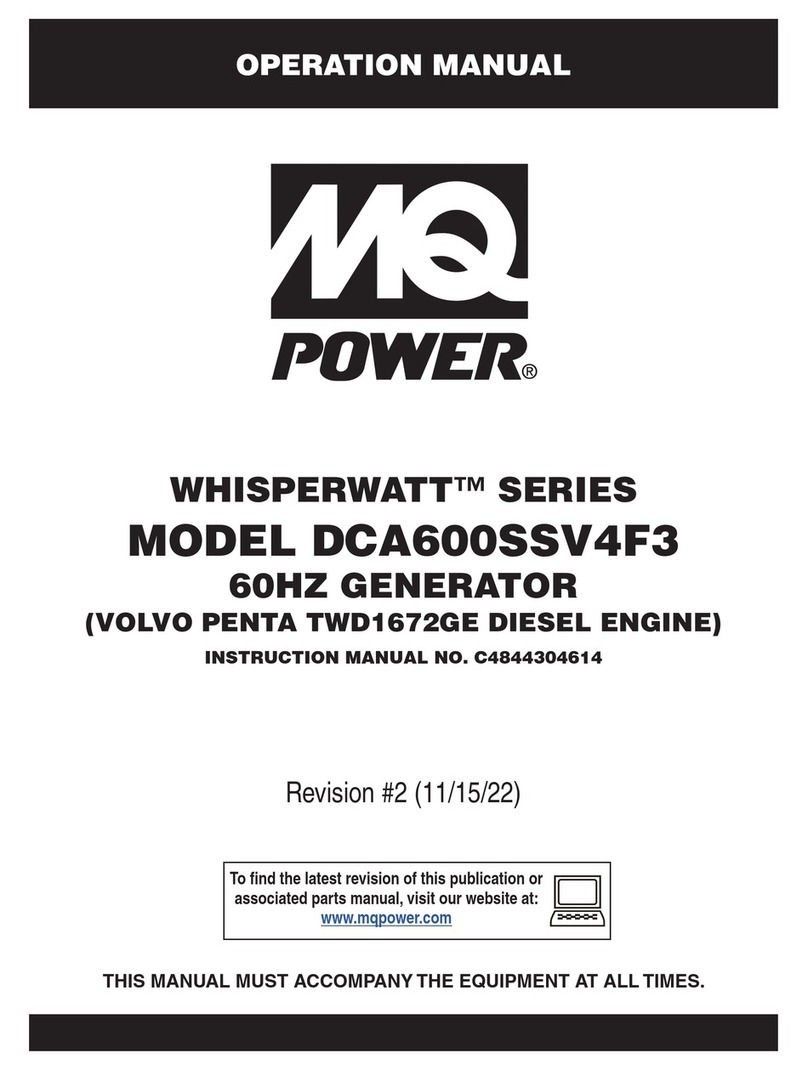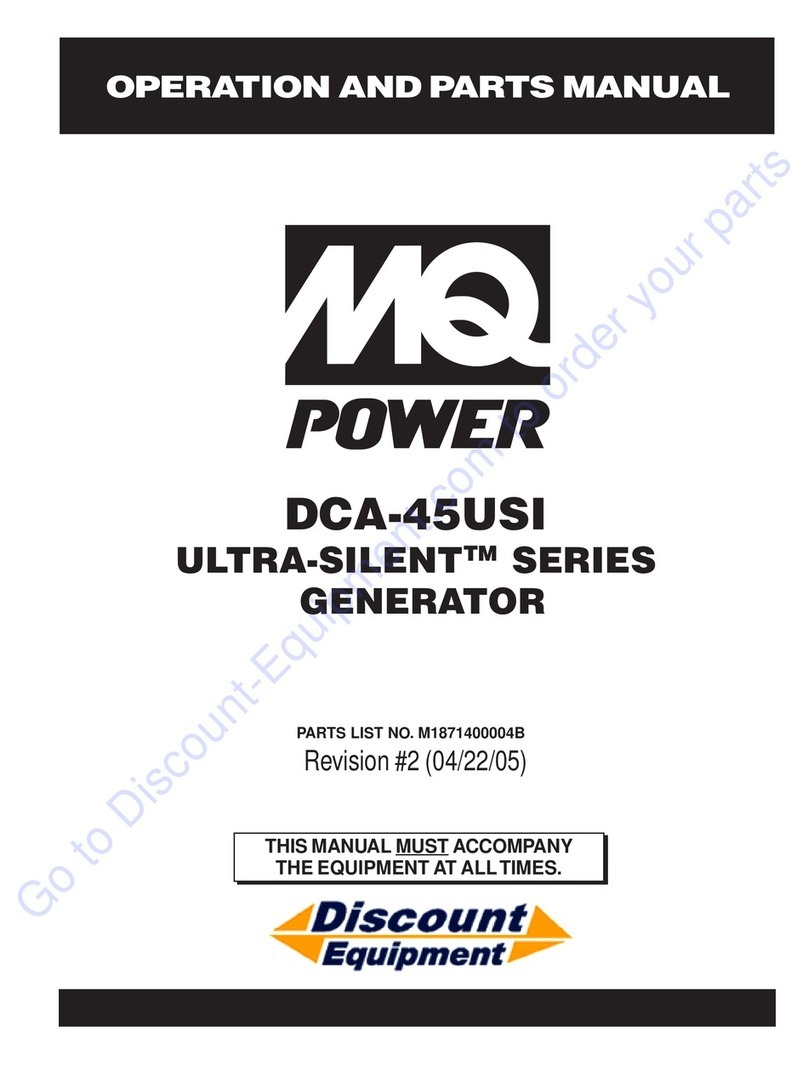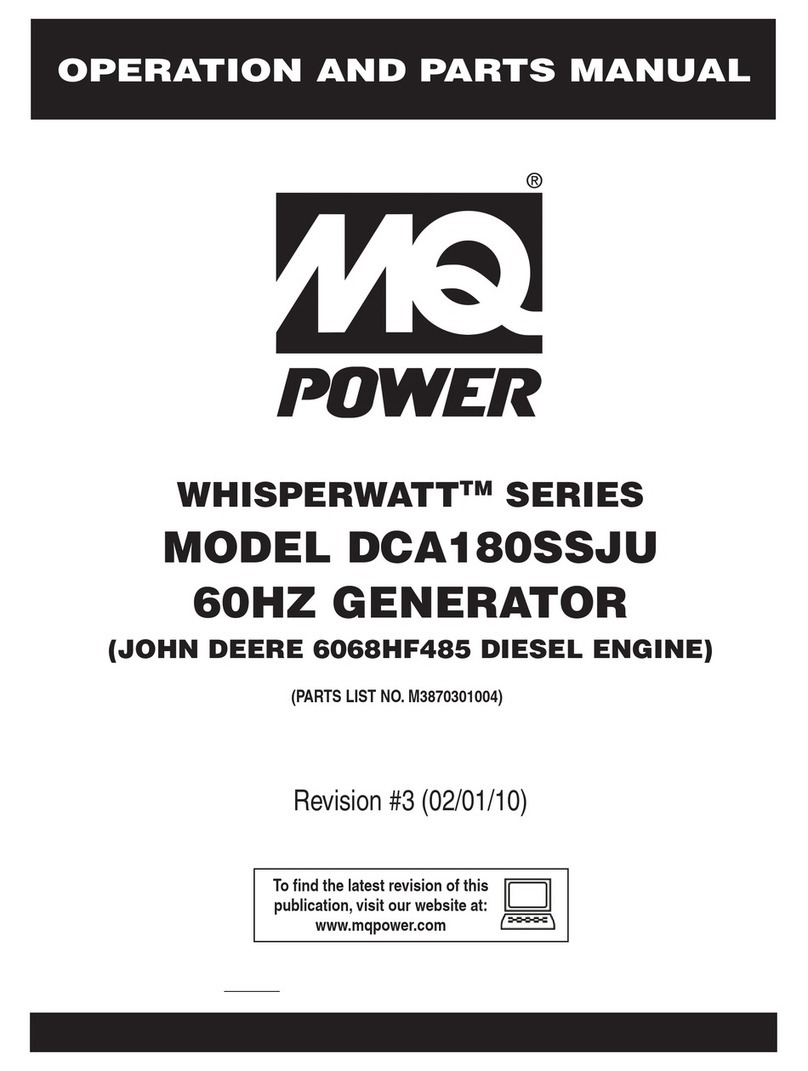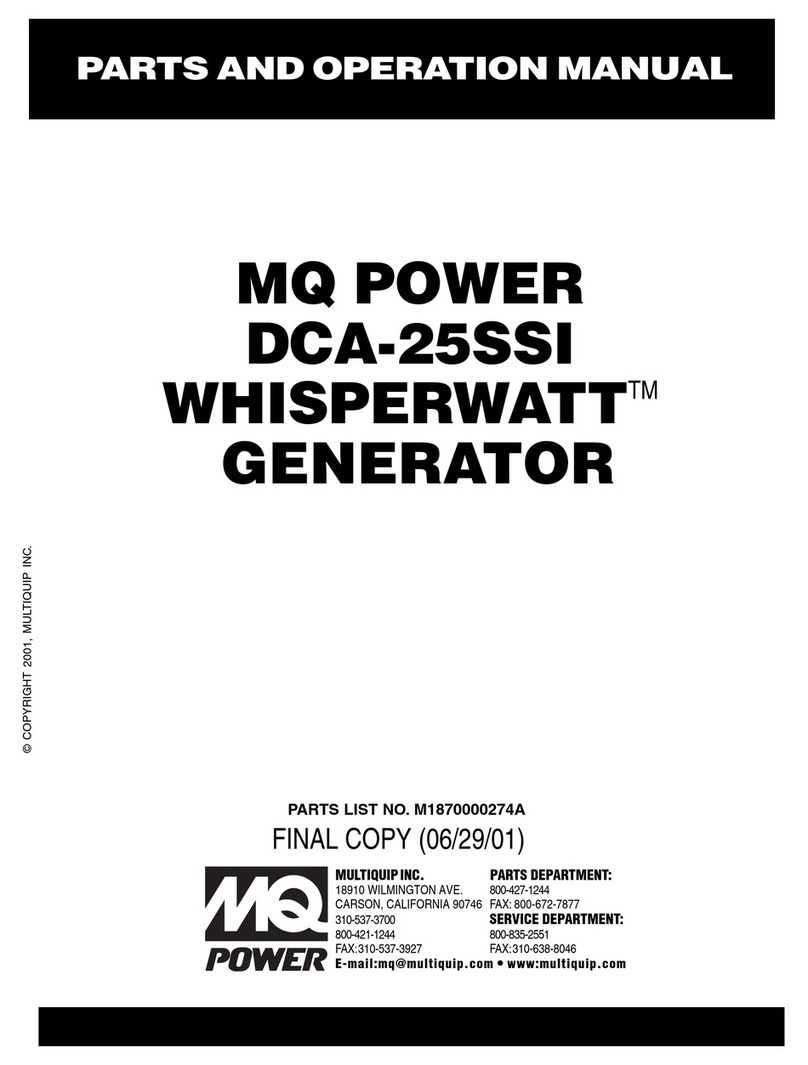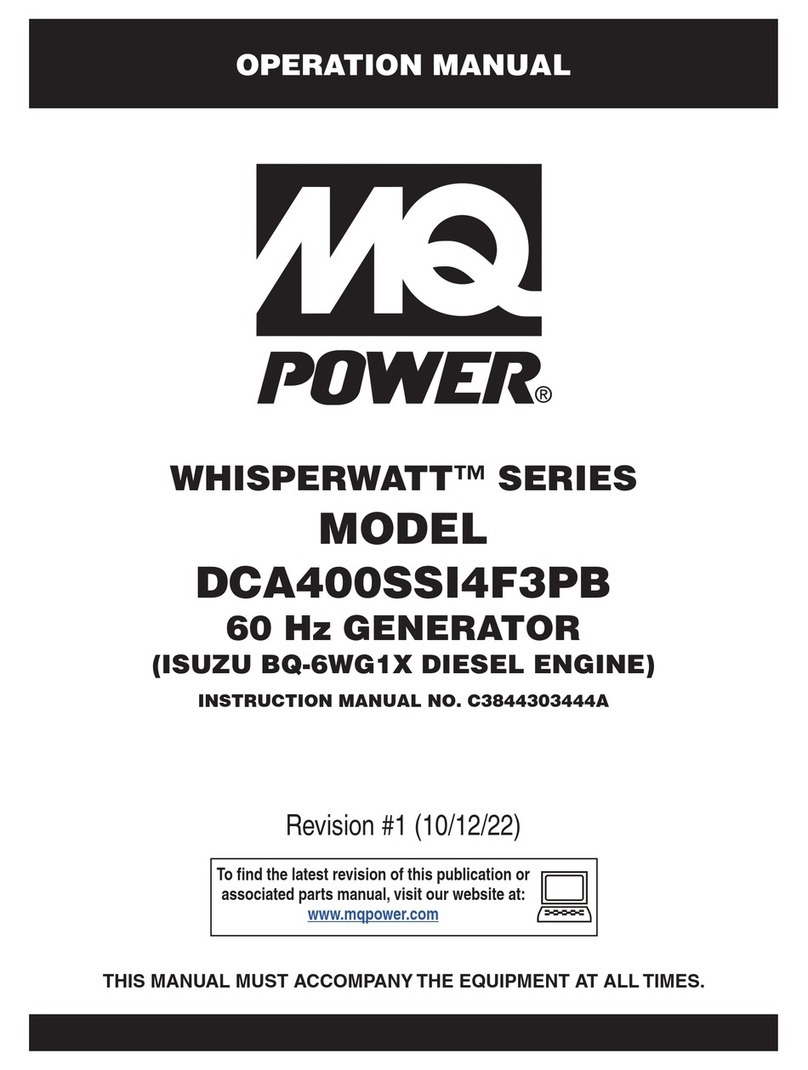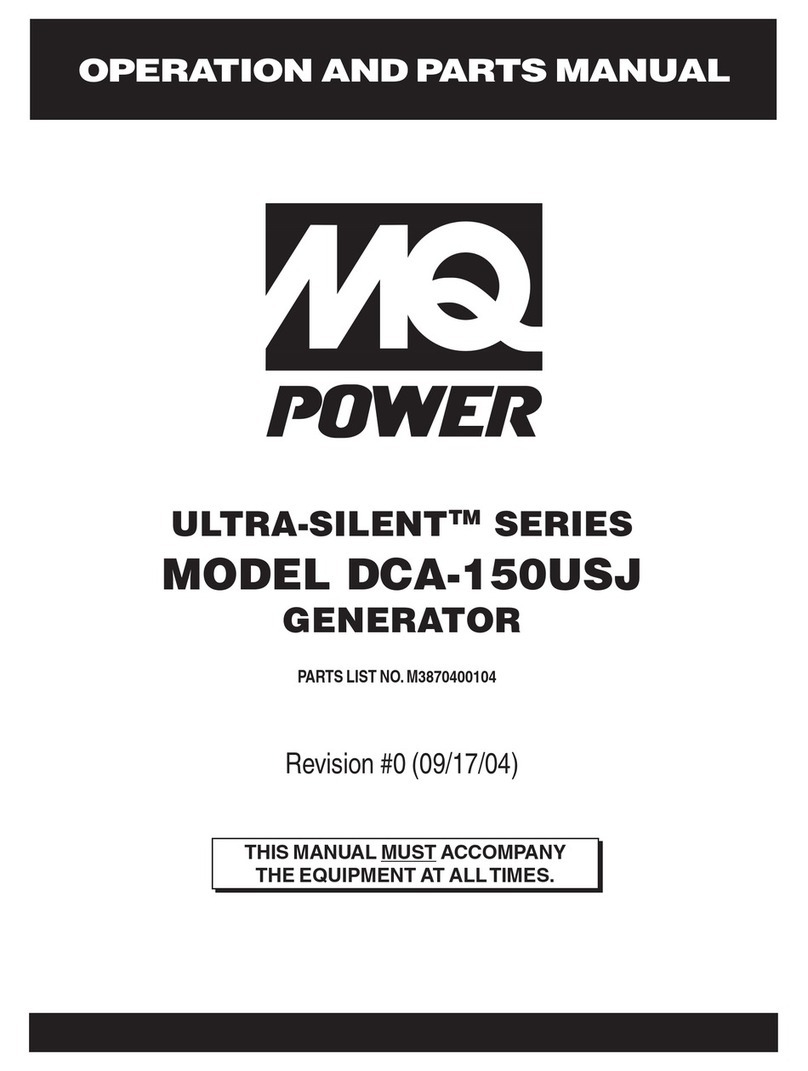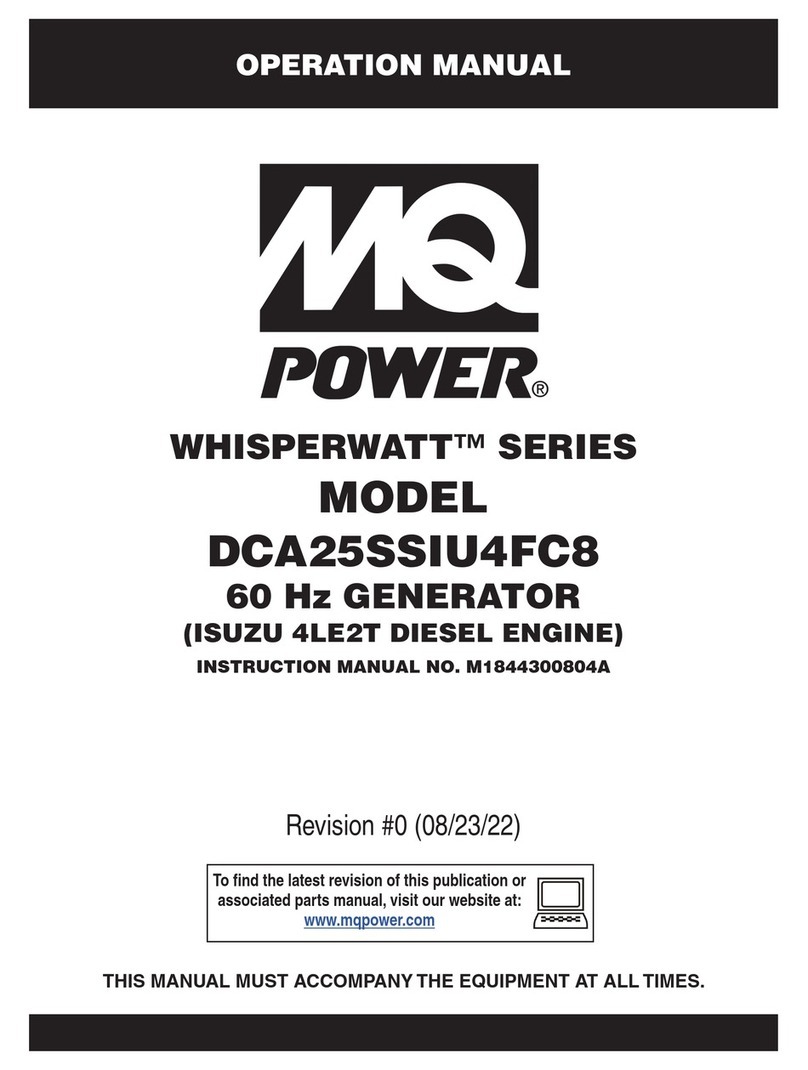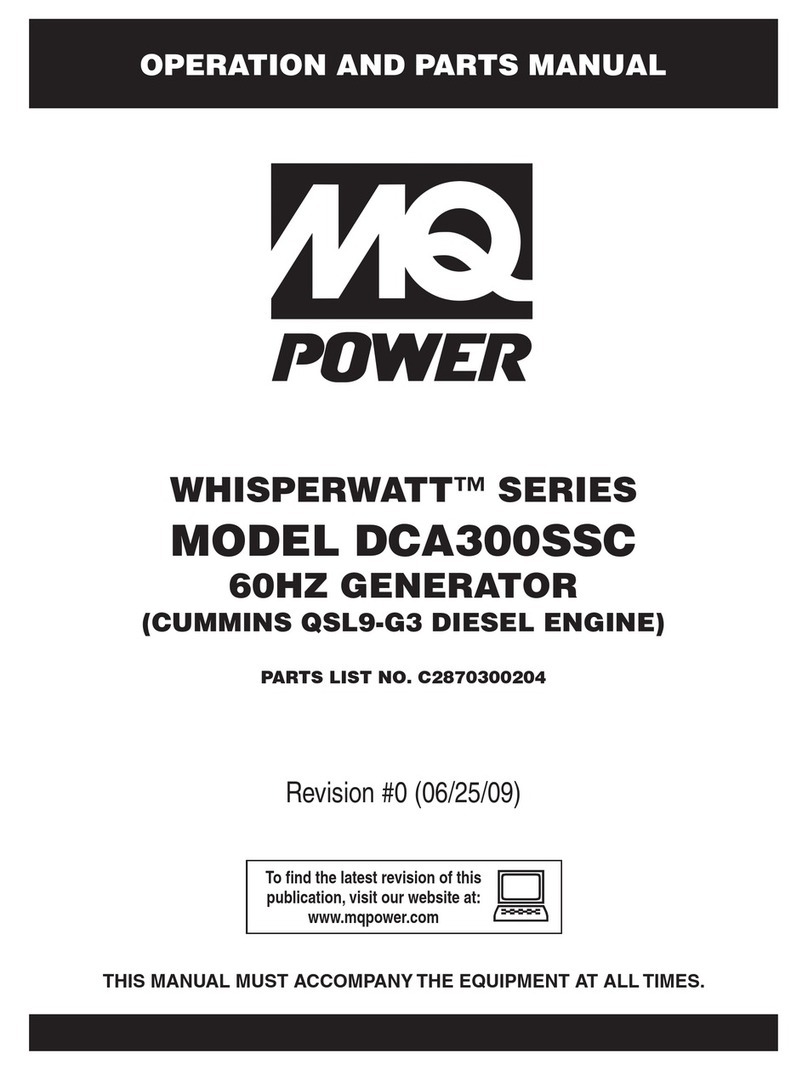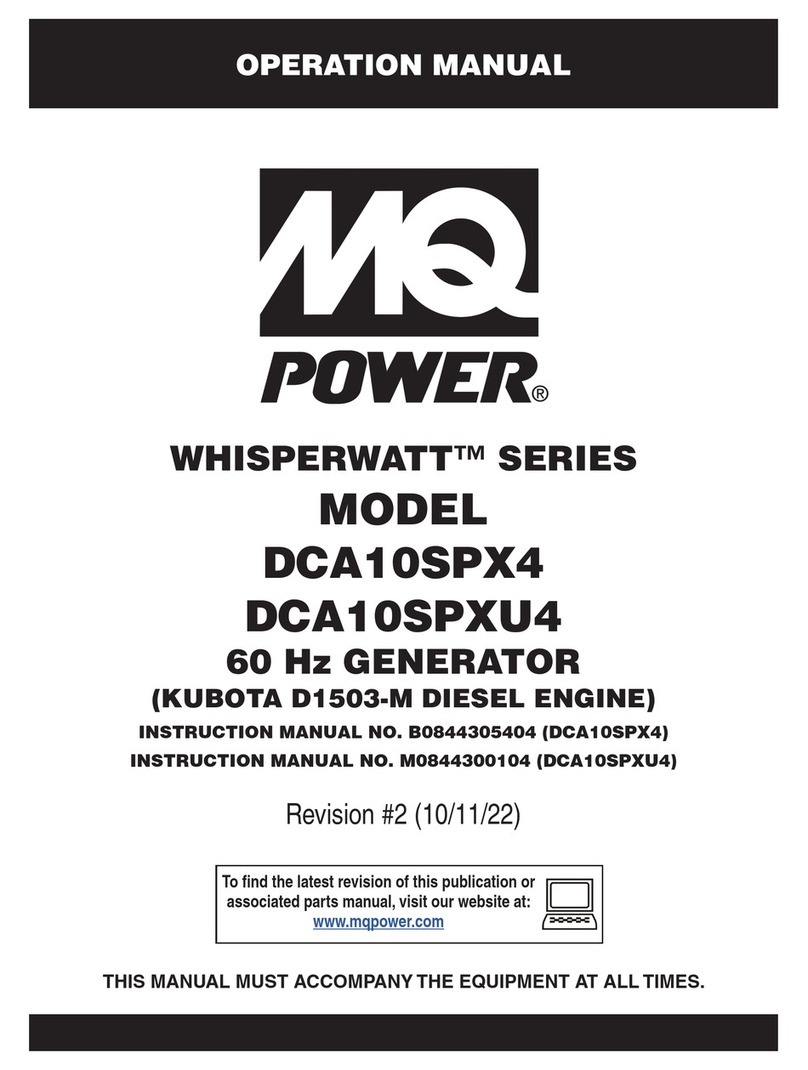
DCA220SSJU4F3PD 60 HZ GENERATOR • OPERATION MANUAL — REV. #0 (11/07/22) — PAGE 7
SAFETY INFORMATION
DANGER
The engine fuel exhaust gases contain poisonous carbon
monoxide. This gas is colorless and odorless, and can
cause death if inhaled.
The engine of this generator
requires an adequate, free
flow of cooling air. NEVER
operate this equipment in
any enclosed or narrow area
where free flow of the air is
restricted. If the air flow is
restricted it will cause injury to people and property and
serious damage to the equipment or engine.
When operating the generator outdoors, DO NOT place
the generator near doors, windows or vents that could
allow carbon monoxide to enter and build up in occupied
spaces.
WARNING
NEVER place hands or fingers inside the engine
compartment when the engine is running.
NEVER operate the engine with heat shields or
guards removed.
Keep fingers, hands, hair and clothing away
from all moving parts to prevent injury.
NEVER operate the generator with the
doors open. Stop the engine before servicing.
DO NOT remove the radiator cap while the
engine is hot. High pressure boiling water
will gush out of the radiator and severely
scald any persons in the general area of
the generator.
DO NOT remove the coolant drain plug while the engine
is hot. Hot coolant will gush out of the coolant tank and
severely scald any persons in the general area of the
generator.
DO NOT drain the engine oil while the engine is hot. Hot
oil will gush out and severely scald any persons near
the generator.
Operation of the generator may create sparks that
can start fires around dry vegetation. A spark arrestor
may be required. The operator should contact local fire
agencies for laws or regulations relating to fire prevention
requirements.
CAUTION
NEVER touch the hot exhaust manifold,
muffler or cylinder. Allow these parts to cool
before servicing the generator.
NOTICE
NEVER
run the engine without an air filter or with a dirty
air filter. Severe engine damage may occur. Service the
air filter frequently to prevent engine malfunction.
NEVER tamper with the factory settings
of the engine or engine governor. Damage
to the engine or generator can result if
operating in speed ranges above the
maximum allowable.
Wet stacking is a common problem with diesel engines
which are operated for extended periods with light or
no load applied. When a diesel engine operates without
sufficient load (less than 30-35% of the rated output),
it will not operate at its optimum temperature. This will
allow unburned fuel to accumulate in the exhaust system,
which can foul the fuel injectors, engine valves and
exhaust system, including turbochargers, and reduce
the operating performance.
In order for a diesel engine to operate at peak efficiency,
it must be able to provide fuel and air in the proper ratio
and at a high enough engine temperature for the engine
to completely burn all of the fuel.
Wet stacking does not usually cause any permanent
damage and can be alleviated if additional load is
applied to relieve the condition. It can reduce the system
performance and increase maintenance. Applying an
increasing load over a period of time until the excess
fuel is burned off and the system capacity is reached
usually can repair the condition. This can take several
hours to burn off the accumulated unburned fuel.
